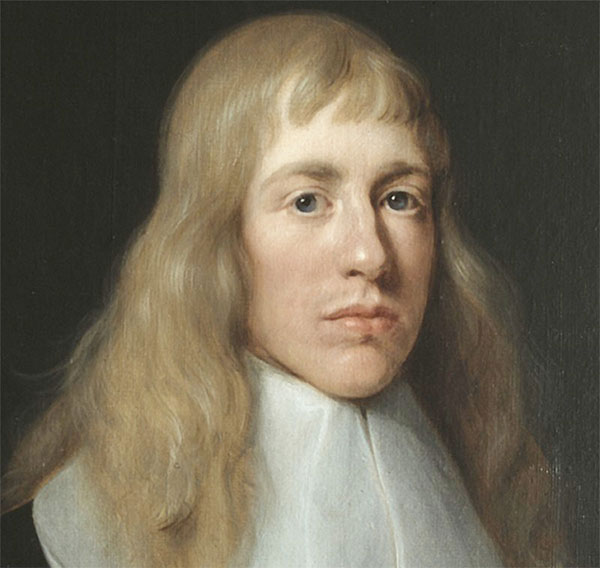Francis Willughby is one of the greatest naturalists of the 17th century. He is known as the first to systematically classify bird species.
Francis Willughby was born into a noble family in England in 1635. He inherited estates in Warwickshire and Nottinghamshire. At the University of Cambridge, where young gentlemen often spent time absorbing new cultural foundations and building influential relationships, Willughby chose a different path – the exploration of science. He delved into new scientific fields, reading the works of Galileo Galilei, Francis Bacon, and René Descartes. He meticulously recorded everything by topic in his notebook.

Francis Willughby (1635 – 1672). (Image: Wikipedia).
Due to his sociable nature, Willughby had many good friends who always encouraged and supported him, the most notable being his tutor John Ray at Trinity College. Both shared a love for science and supported new ways of thinking about the natural world. They were not completely trusting of ancient authorities – such as Aristotle – nor did they take others’ words at face value; they sought evidence and firsthand experiences.
In his early university days, Willughby undertook several journeys to the Lake District, Wales, and the South West of England to study the habitats of seabirds. Later, he embarked on an expedition to mainland Europe with Ray and two other friends. Their primary modes of transport were horses, donkeys, or boats. Throughout the trip, they visited and exchanged knowledge with many renowned contemporary scientists, meticulously documenting their findings along the way.
The most memorable part of Willughby and his friends’ journey was the three months spent in the city of Venice. They had to cross the Alps, overcoming many difficulties and hardships before reaching northern Italy. In return, they witnessed the richness of the flora, the unique culture of the Venetian people, especially the fish market. Not only did Willughby aim to describe every known bird species, but he also planned to write a book about fish species. At the market in Venice, he discovered hundreds of different specimens.

Some bird species described in ‘The Ornithology’. (Image: Panteek).
Willughby recorded and classified specimens systematically. He began by describing external characteristics, then measured everything from the beak of the bird to the length of the dorsal fin of the fish. Next, he dissected the animals to examine internal features. What he always sought was “a distinguishing mark,” or the prominent features of an organism to differentiate one species from another.
Today, we have a wealth of knowledge and information about bird species. However, in Willughby’s time, distinguishing between two similar species, such as the thrush and the redpoll, was extremely challenging. Nevertheless, Willughby provided accurate anatomical descriptions that helped identify bird species that were even closely related. Based on factors such as habitat (terrestrial, aquatic) and certain physical characteristics like the shape of the bird’s beak, he developed a detailed classification system, starting with species found in England and gradually expanding to mainland Europe.
Other scientists refined Willughby’s system in the centuries that followed, including the Swedish biologist Carl Linnaeus in the mid-18th century. Linnaeus employed a binomial nomenclature consisting of genus and species to classify all organisms based on morphological characteristics – from molds and bacteria to animals, plants, and humans.
Willughby and Ray’s most famous work is “The Ornithology” (Ornithology – the science of studying bird species), published in 1676. They combined data collected over many years of fieldwork with notes from travelers to Brazil and Mexico. The names of native bird species in South America were primarily recorded phonetically, leading to potential confusion. The book even mentions some mythical bird species from around the world.
The work “The Ornithology” features a total of 77 illustrations from various sources. Most originated from the collection of images and specimens owned by Willughby. The book has become an indispensable reference for later ornithologists. The content of the book also appears in many encyclopedias on natural history from that era.
Willughby believed that there were approximately 500 bird species in the world. He identified about 90% of the roughly 200 bird species commonly found in England and Wales. However, the actual number of bird species known today is around 10,000, far exceeding Willughby’s predictions.
In addition to his expertise in bird species, Willughby also researched many other topics. Inspired by the discoveries of physician William Harvey regarding blood circulation in 1628, he contemplated the movement of tree sap for many years before this topic appeared in the Philosophical Transactions of the Royal Society. He was also the first to classify insects based on their metamorphic forms. He recognized that larvae, pupae, and butterflies were stages of a single insect species, not separate species. He even wrote a research paper on games, from football to cards.
At present, Willughby is almost a forgotten scientist. Part of this is due to his untimely death at a young age (36) from tertian fever or pneumonia, and many of his research works have been lost.
To honor Willughby’s contributions, the scientific community named a fish species (Willughby’s char), a bee species (Willughby’s bee), and a genus of plants after him. Although he was the first to classify bird species, it is unfortunate that no bird species has been named after him.


















































